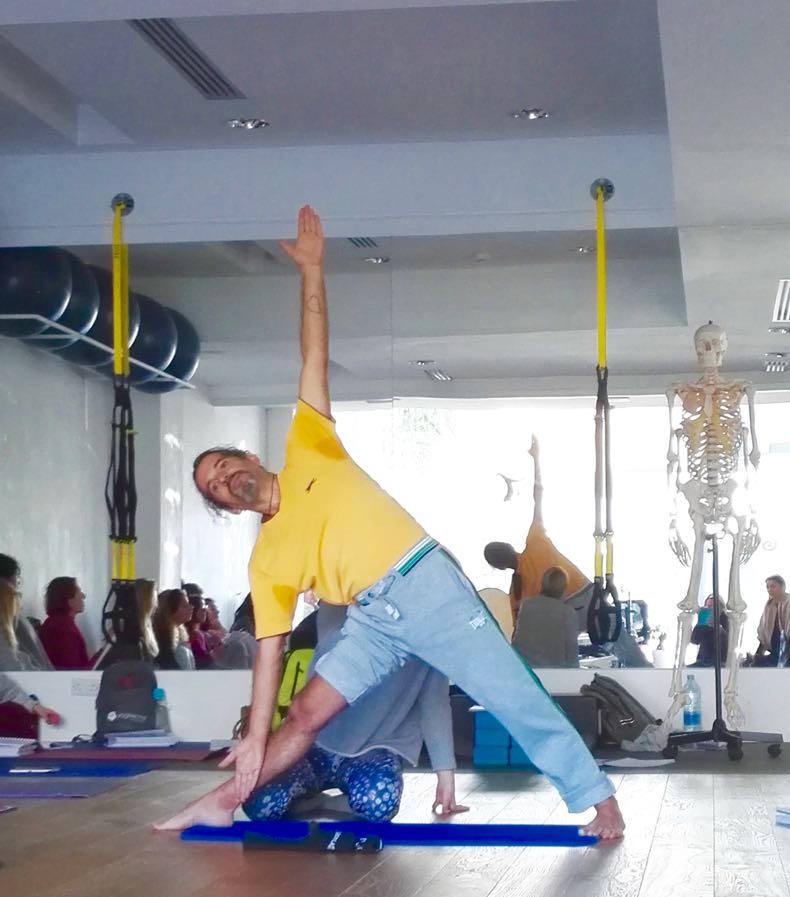Several of my friends working in the fitness and wellbeing industry have been asking me lately how and where is it good to do a yoga teacher training. Unless you follow a particular teacher and/or school of yoga (such as Ashtanga or Iyengar) there is an overwhelming amount of trainings out there and it can get quite confusing what they have to offer and how do they differ from one another. Below you can find some of the things you want to consider when making your choice.
What is your intention or rather, why do you want to do teacher training in a first place?
This might seem a bit of a silly question but the truth is, many people do a teacher training purely to deepen their knowledge and practise of yoga. And by all means, if you have the time and money for it, nobody is telling you not to go for it. However it might be useful to study other options if you “just” want to get more into your practise and enhance your knowledge.
Yoga retreats and workshop are organised pretty much everywhere, and there are many excellent yoga teachers who travel extensively making it easier to catch them in action. It is worth considering if a week’s intensive or a even weekend’s workshop focusing on a particular aspect of yoga is something you want to explore first, before forking out few thousand (or more) euros/pounds/dollars for your 200 hours full-on training.

“I’m mainly interested in the physical aspects of yoga…”
Well, a lot of us were, at least at the start. Some of us might still have a slight preference for asana practise. However, to be a good yoga teacher you will need to have a solid understanding of at least the basics of the seven other limbs of yoga in addition to the physical aspect. Approach them with an open mind and patience and you are very likely to be positively surprised. Or, choose a training with an emphasis on purely what you are interested (you might be missing out on something wonderful though…)
Talking of which…

…what does the training consist of?
It is no secret that there is a big problem with modern (Western) yoga teacher trainings in general: There is no one governing body for yoga teacher trainings, despite various alliances and groupings and, well, attempts of having some kind of uniform standards. Bluntly put, your training can include be whatever the course director has decided to teach to you, and the credentials of your teacher are not really controlled by anybody (regardless how many “RYT”s they have after their name.)
However, many teacher trainings do have the following modules included in some sort of form: Techniques, Training and Practice; Teaching Methodology; Anatomy & Physiology; Yoga Philosophy/Ethics/Lifestyle and Practicum. What emphasis is given to these modules can vary a lot from training to training and it is for you to find out and think what do you want to focus on. Remember that in addition to taught parts you might be required to complete certain number of self-practise in the style of yoga you are training on (in mine it was 20 hours in addition to the classes taken in-training) and complete written assignments.

This might all sound a bit overwhelming and well, chaotic, so let me put it this way: I know several yoga teachers who have done two or more 200 hour teacher trainings, all in different schools, because each of them had something specific to offer. The homework is there to deepen your knowledge, for your benefit. As for the teaching practise, whilst I for one found it quite daunting at the beginning, we are talking about yoga TEACHER training and it is one thing to practise yoga and entirely other one to have the skills to teach yoga to others. Being a student of yoga is not linear path and at the risk the risk of saying a massive cliche, it IS all about the journey.
Learn to teach, teach to learn
Intensive or extensive, home or abroad?
There is a whole range of options available, in various languages. You can do a 21-28 day intensive on a paradise island, a modular inner city ones (and sleep in your own bed) or a training that is a combination of intensives and shorter workshops. I did mine over 6-month period, with intensive weekends (Sat-Sun) every other week. It worked well for me as it allowed a lot of time to read, practise and really let everything sink in, AND I still got to maintain a somewhat normal life too with work and friends. I probably would have found a intensive retreat type of training a little bit too much at that time, yet part of me finds the thought fascinating… so who knows, maybe for my next training I’ll try it out?
I hope this was of some use for you. At the end of the day, nothing beats your own research and gut feeling when it comes to choosing the YTT suitable for you.
As always, I’d love to hear from you so feel free to leave a comment below if you want to tell about your experiences, add something that was not mentioned in the text and/or ask something.

